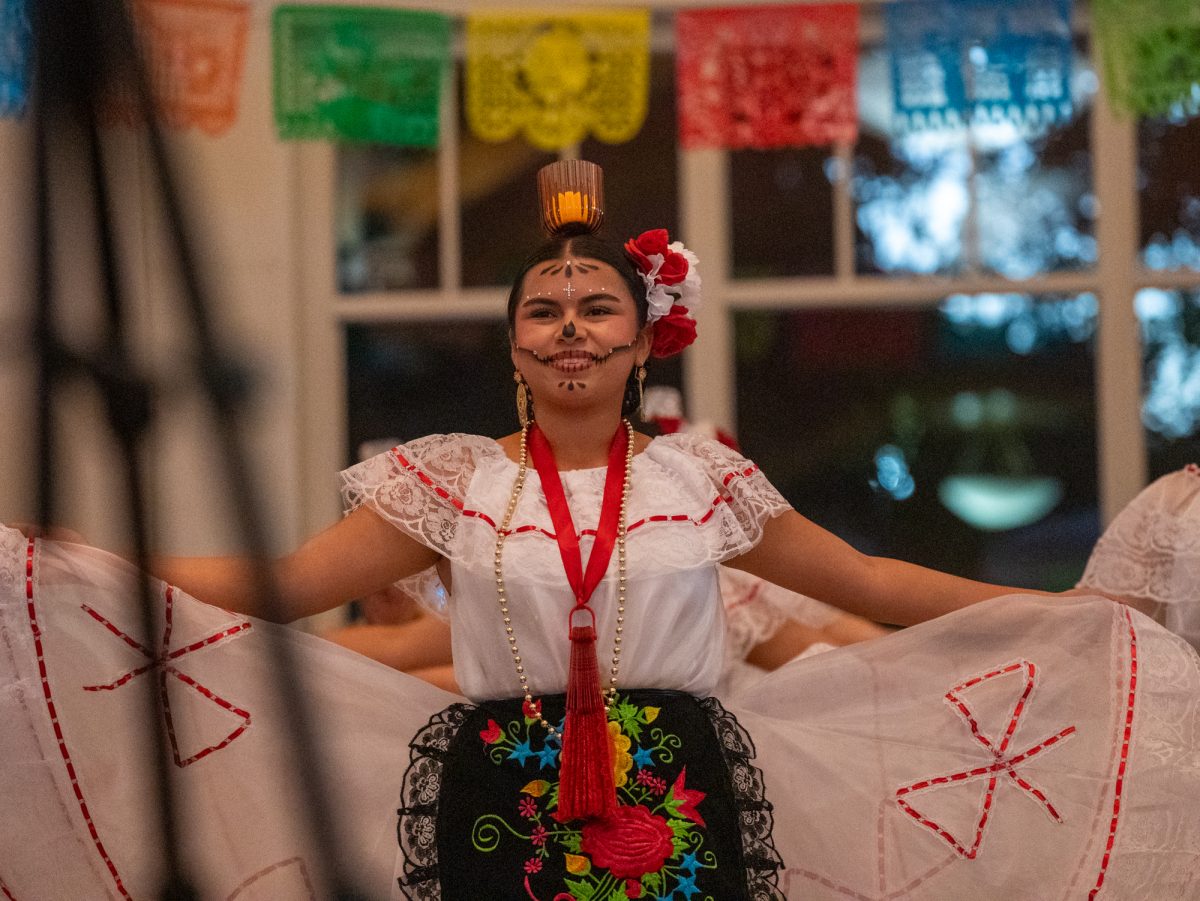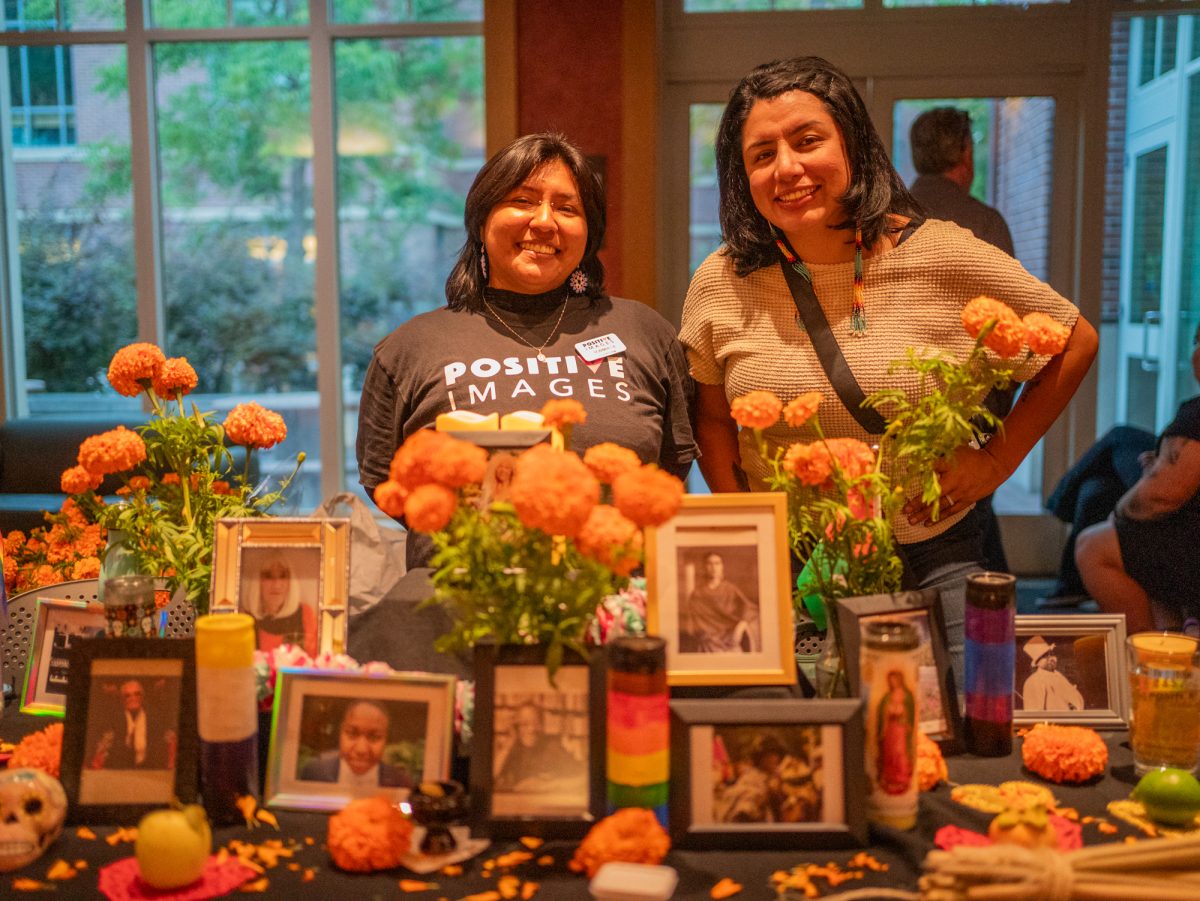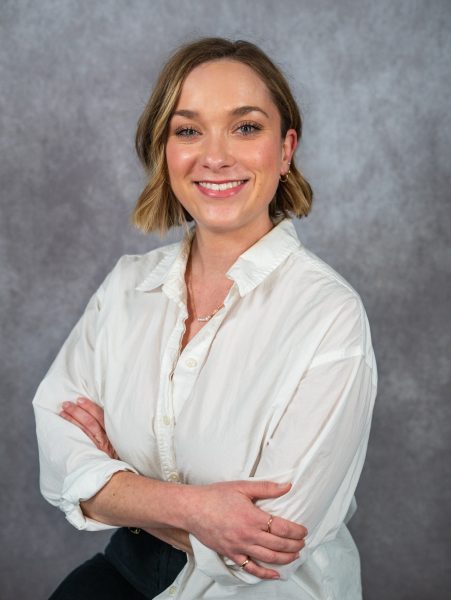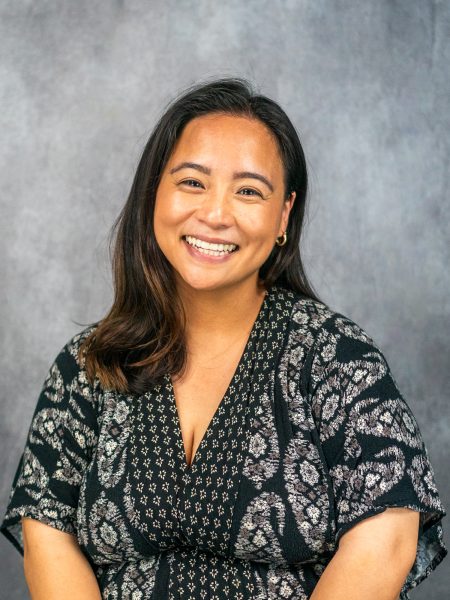Santa Rosa Junior College students, staff and community members adorned themselves in a myriad of marigolds as the Movimiento Estudiantil Chicano/a/x de Aztlán (MEChA) de SRJC celebrated Día de Muertos under the glow of candlelight and papel picado – colorful, perforated paper banners – on Tuesday evening in Bertolini Hall.
Día de Muertos originated in Mexico over 3,000 years ago and has since branched to multiple Latino cultures that recognize it today. Families traditionally celebrate it on Nov. 1 and 2, when they believe the departed spirits of their loved ones return to visit them, according to the National Museum of the American Latino.
The living commemorate their ancestors by decorating altars with photos of the deceased, food and sentimental items that represent their lives.
The crowd grew to approximately 75 to 100 guests, all communing over pan de muerto and champurrado, a traditional hot, chocolatey and milky drink, before observing SRJC’s ballet folklorico club, Espejo de mi alma – Mirror of my soul – performance and going on a procession through Emeritus Hall and the Bertolini Student Center to view various altars.
Local organizations created their own altars to support the event. SRJC’s Mathematics, Engineering, Science Achievement (MESA), Humanidad Therapy and Education Services, and Positive Images had tables adorned with photos, candles, fruit, bread and candy.
Patty Castro, 44, and Jessica Lopez, 33, work for Humanidad in Santa Rosa, a mental health and translation organization for low-income families. The central photo on Castro and Lopez’s altar depicted Maria Hess, one of Humanidad’s founders, who died at age 69 in 2021. “We feel her spirit in the office sometimes,” they said.
Dia de Muertos offers a new perspective on something most Americans shy away from – death.
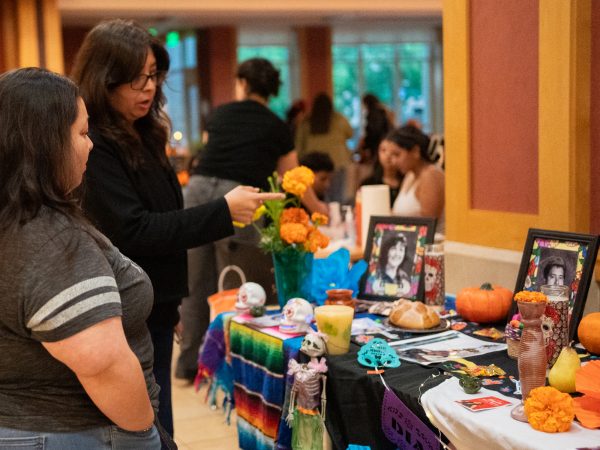
“It honors the dead in a way that I think many Americans, who do not come from a Mexican or Latino background, would really benefit from understanding,” said English and Chicano literature professor Michael Hale, Ph.D. “It’s a conception of death that is not morbid, not sad. Americans have a depressed sense of death. So they run from it, they avoid it.”
Hale grew up in a predominantly Mexican and Salvadorian neighborhood in Los Angeles, so although he is of Irish-Italian descent, he found comfort in the Dia de Muertos event. He remembered his parents, Leonard and Pamela, both of whom passed within the last year and a half. According to Hale, helping students set up the altar in Emeritus Hall was deeply meaningful to him.
About 42% of the SRJC student body identifies as Latino, based on a 2024 census, making the culture a significant part of the community. Esperanza Marquez, 19, a student and co-president of MEChA, helped organize the event and described how MEChA supports the greater community.
MEChA currently focuses on supporting Sonoma County’s immigrant community. “Personally, I’m a little scared,” Marquez said. “Because of how much I work with that specific community, I know the hardships that they go through and the work that they do for their families. This community and the heart that they bring, it’s the life to my life.”
Altars will remain on display at SRJC’s Roseland, Petaluma and Santa Rosa campuses from Oct. 13 – Nov. 4. The Santa Rosa Intercultural Center has a downloadable altar map so students can stop by locations during business hours to view them.



